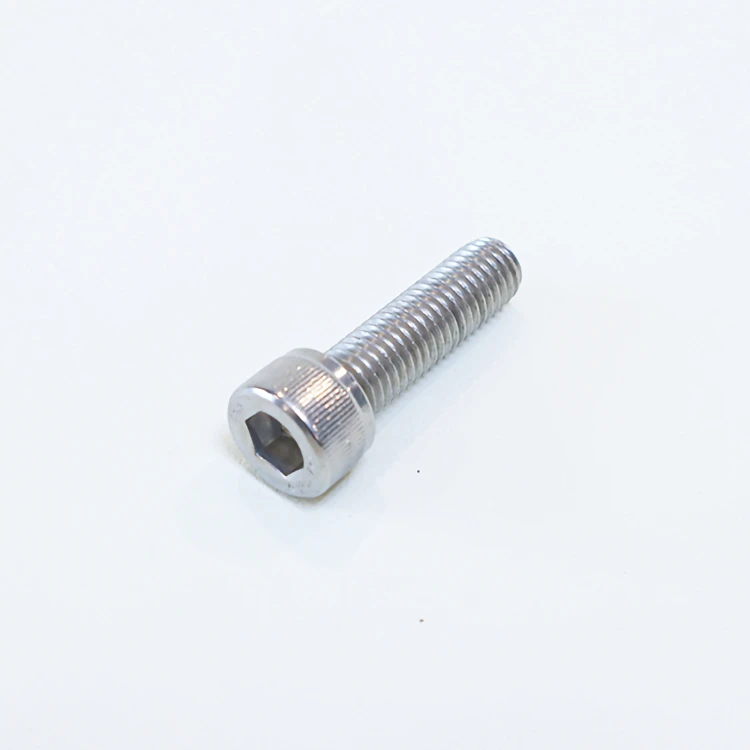Introduction
In the world of industrial fasteners, high-strength hexagon socket bolts hold a significant position due to their versatility, durability, and reliability. These bolts are commonly used in various applications, ranging from automotive and aerospace industries to construction and heavy machinery. Their unique design, characterized by a hexagonal recess in the head, allows for greater torque application and secure fastening in high-stress environments.
Design and Material
High-strength hexagon socket bolts, also known as Allen bolts or socket head cap screws, feature a cylindrical head with a hexagonal socket. This design requires a hex key or Allen wrench for installation and removal, providing a more robust and tamper-resistant fastening compared to traditional bolts.
The materials used in the manufacturing of these bolts play a crucial role in their performance. High-strength hexagon socket bolts are typically made from alloy steels, which offer superior tensile strength, yield strength, and toughness. Commonly used materials include:
- Carbon Steel: Known for its high tensile strength and affordability, carbon steel is a popular choice for general applications.
- Alloy Steel: Enhanced with elements like chromium, molybdenum, and nickel, alloy steel provides excellent strength, hardness, and resistance to wear and corrosion.
- Stainless Steel: For applications requiring corrosion resistance, stainless steel hexagon socket bolts are ideal. They combine strength with resistance to rust and oxidation.

Manufacturing Process
The manufacturing process of high-strength hexagon socket bolts involves several critical steps to ensure precision and quality:
- Material Selection: High-quality raw materials are chosen based on the required specifications and application needs.
- Cutting and Forming: The selected material is cut into appropriate lengths and formed into the desired shape using forging or machining techniques.
- Threading: Threads are precisely cut or rolled onto the bolt shank to ensure accurate fitting and load distribution.
- Heat Treatment: To enhance strength and durability, the bolts undergo heat treatment processes such as quenching and tempering.
- Surface Finishing: Surface treatments like plating, coating, or passivation are applied to improve corrosion resistance and aesthetic appeal.
Applications
High-strength hexagon socket bolts are indispensable in numerous applications due to their ability to withstand high loads and harsh conditions. Some key applications include:
- Automotive Industry: Used in engine components, transmission systems, and suspension assemblies where high strength and reliability are paramount.
- Aerospace Industry: Essential for securing critical aircraft components that require superior strength and precision.
- Construction: Utilized in structural steel connections, machinery assemblies, and heavy equipment.
- Machinery and Equipment: Ideal for fastening parts in industrial machines, hydraulic systems, and robotic devices.
- Electronics: Used in assembling electronic devices and enclosures, where compact and secure fastening is necessary.
Advantages
High-strength hexagon socket bolts offer several advantages that make them a preferred choice in demanding applications:
- High Load Capacity: Their design and material composition allow them to handle substantial loads and stress.
- Ease of Installation: The hexagonal socket design facilitates easy installation and removal, even in tight spaces.
- Tamper-Resistance: The recessed socket provides a level of tamper-resistance, enhancing security in critical applications.
- Durability: High-strength materials and precise manufacturing ensure long-lasting performance and reliability.
- Versatility: Available in various sizes, lengths, and materials to suit a wide range of applications.
Conclusion
High-strength hexagon socket bolts are integral components in numerous industries, providing secure and reliable fastening solutions. Their unique design, coupled with high-quality materials and precise manufacturing, ensures they meet the demanding requirements of modern engineering and construction. Whether in automotive, aerospace, construction, or machinery, these bolts continue to play a crucial role in ensuring safety, performance, and durability.